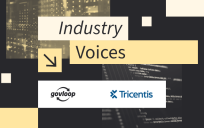This blog post is an excerpt from our recent report with Red Hat, Application Modernization in Government: Breaking Down What You Need to Know. To read the full report, head here.
The prospect of modernizing a large portfolio of traditional government applications to run in the cloud is daunting. Where to start? How can you do it gradually, as staff time permits? What if you later choose a different cloud? During the transition, how can you make it simple to manage a mixed portfolio of monolithic and microservices applications?
The first step to modernizing government IT is moving existing Java EE applications to an open source application platform. Agencies can deploy an open source platform anywhere — bare metal, on-premise cloud or public cloud. With the right platform, agencies can host monolithic, virtualized or containerized applications in the same runtime environment.
They can make their journey to the cloud in phases or all at once. Generally, there are three patterns to modernizing applications in government, depending on what the agency is looking for or capable of doing: lifting and shifting; augmenting with new layers; and rewriting.
• Lifting and shifting modernizes how existing applications are packaged and deployed. By lifting and shifting, existing components are implemented on a modern platform.
• Augmenting with new layers involves creating a new layer of application software that wraps the existing application functionality and data with an interface that is accessible to new applications.
• Rewriting an application is different from creating new applications from scratch; it is the process of creating new functionality to replace and retire existing applications.





This is an interesting summary of the options available to the government on this topic. It inspired me to go read the full report.